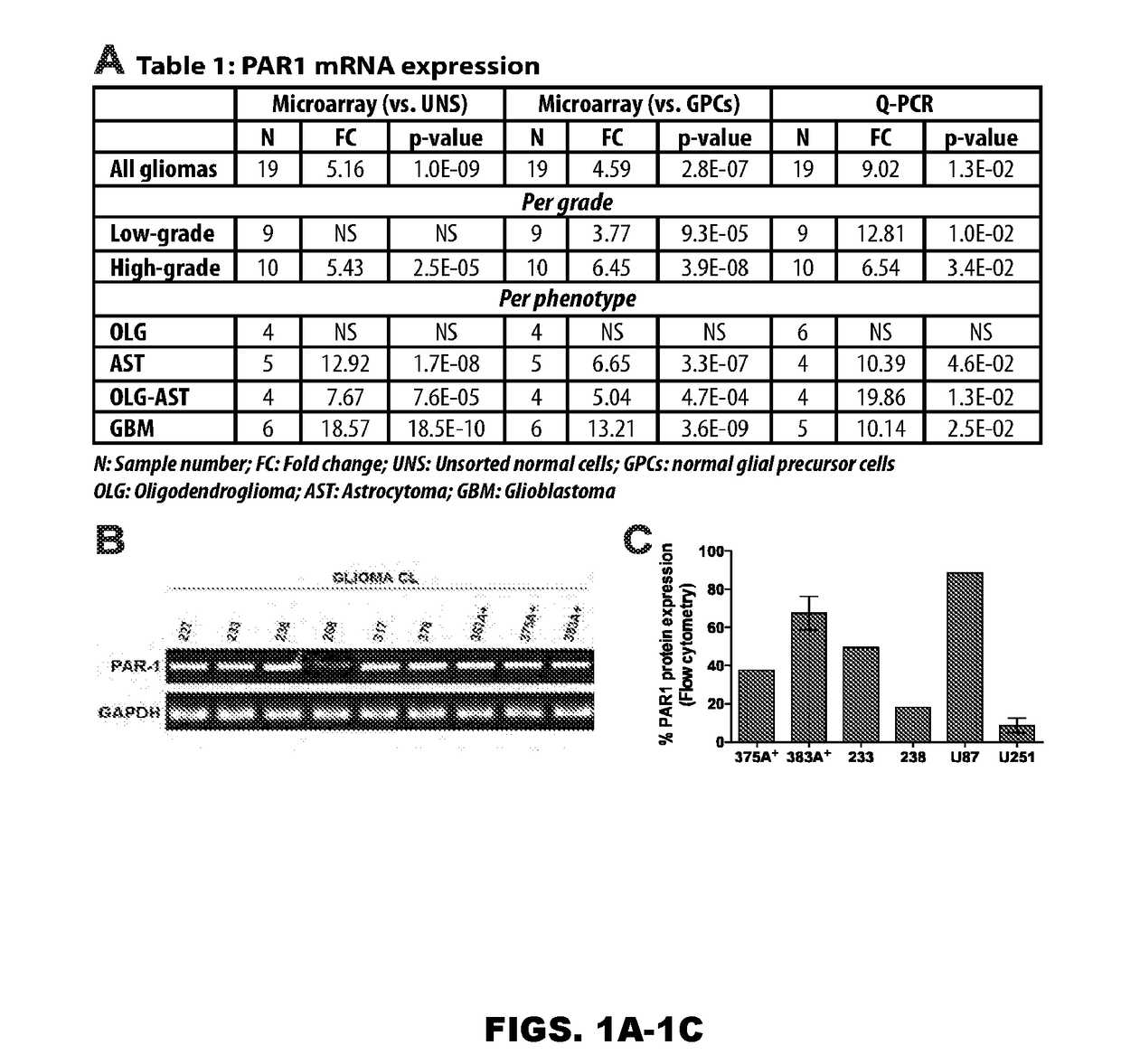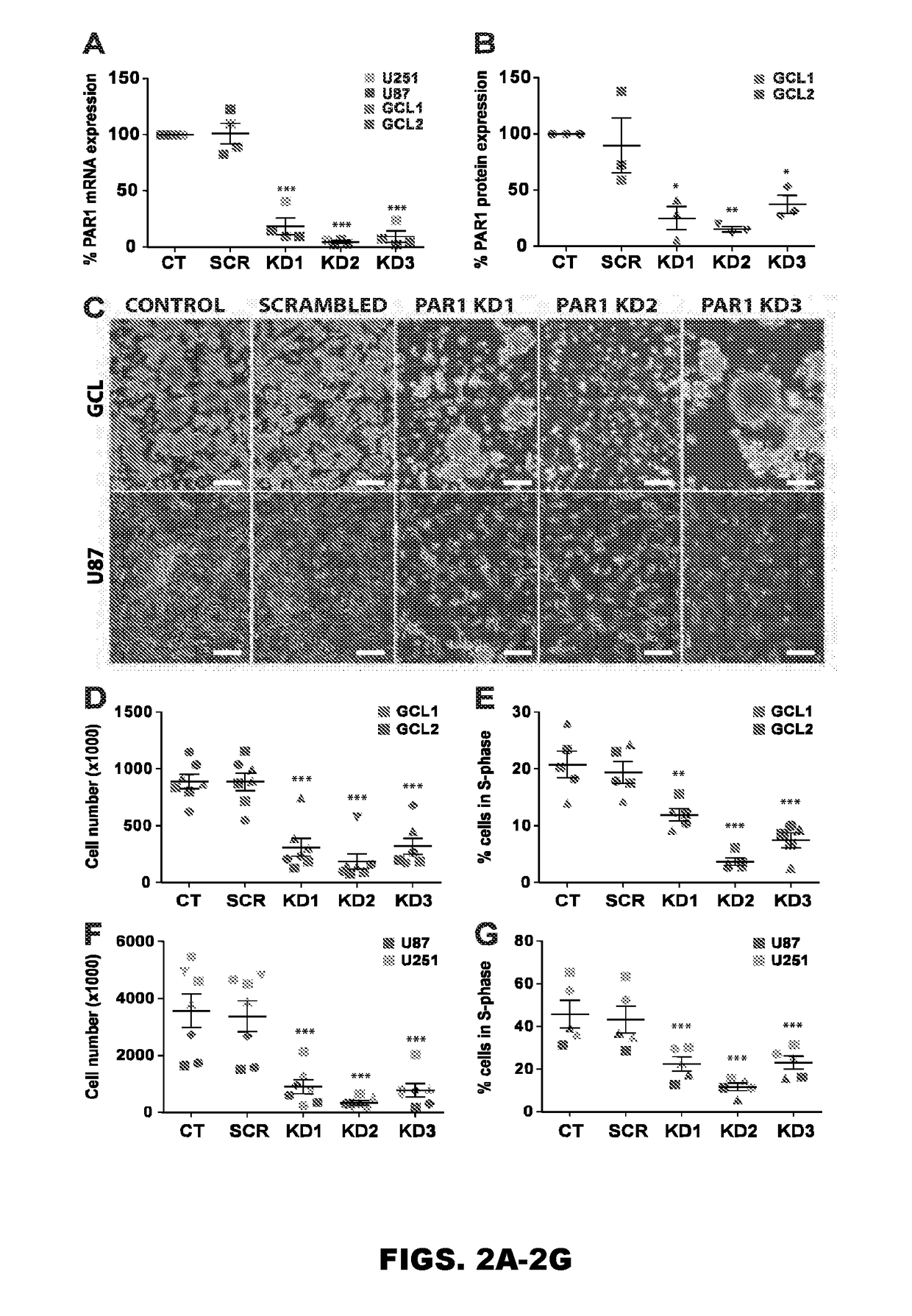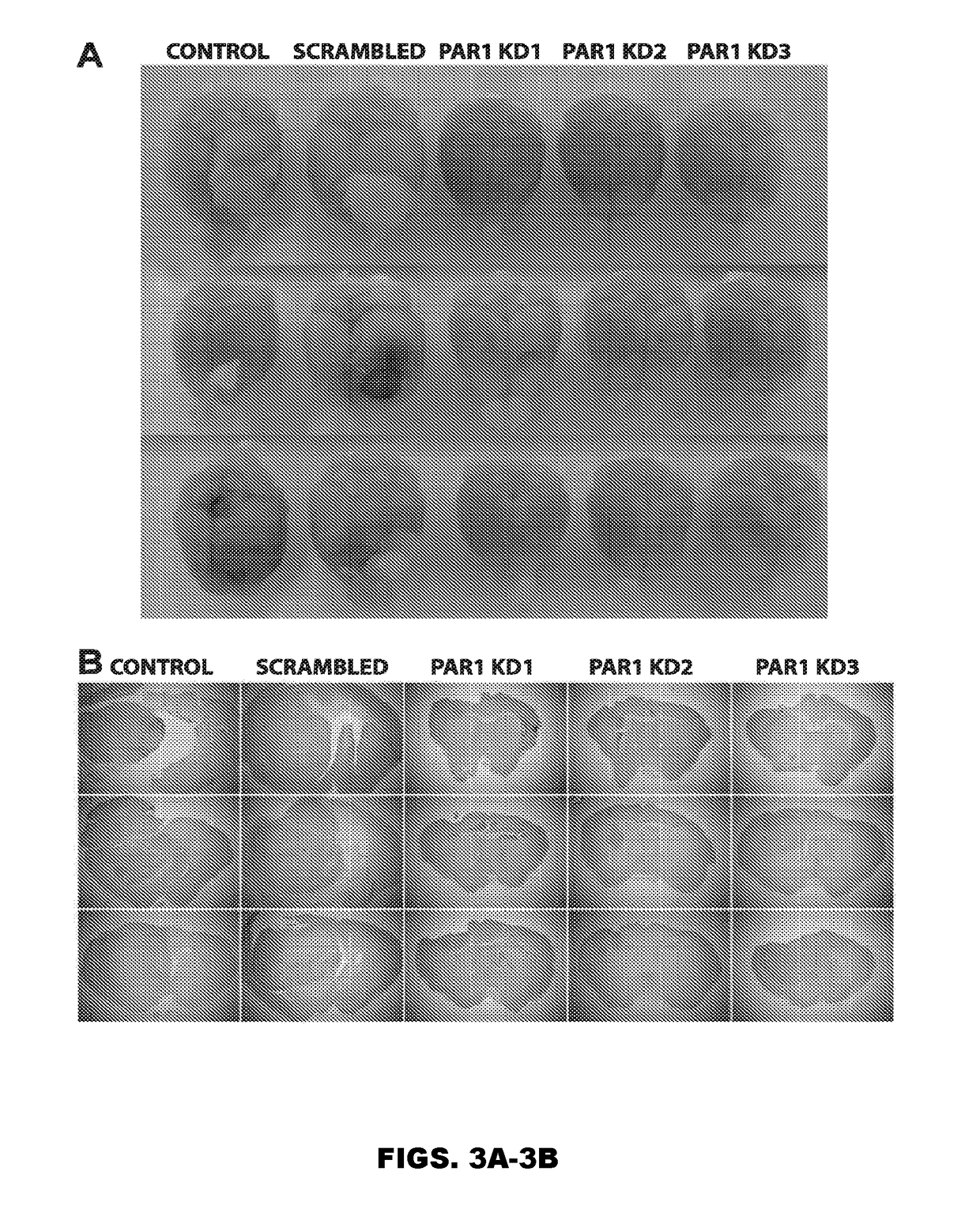Use of inhibitors of binding between a par-1 receptor and its ligands for the treatment of glioma
a technology of par-1 receptor and ligand, which is applied in the field of use of inhibitors of binding between par-1 receptor and its ligand for the treatment of glioma, can solve the problems of only achieving palliation and short-term survival increments, the current treatment of glioma and glioblastoma is lacking, and the growth and proliferation of glioma tpcs are suppressed, so as to achieve the effect of suppress
- Summary
- Abstract
- Description
- Claims
- Application Information
AI Technical Summary
Benefits of technology
Problems solved by technology
Method used
Image
Examples
example 1
Overexpressed in A2B5-Defined Glioma Tumor Precursor Cells (TPCs)
[0102]To identify new pathways to target for treatment of malignant glioma, the gene expression profile of glioma TPCs relative to their normal homologues using microarray analysis was assessed. This strategy was based on the expression of specific gangliosides recognized by the monoclonal antibody A2B5, which identifies normal glial precursor cells (GPCs) in the adult human brain (Nunes et al., “Identification and Isolation of Multipotential Neural Progenitor Cells from the Subcortical White Matter of the Adult Human Brain,”Nat Med 9:439-447 (2003), which is hereby incorporated by reference in its entirety). A2B5-defined glioma cells exhibited biological features of TPCs in vitro and in vivo. The expression profile of A2B5-sorted glioma TPCs isolated from oligodendroglioma (n=4), oligoastrocytoma (n=4), astrocytoma (n=5), and glioblastoma multiforme (n=6) was further analyzed and compared directly to the expression pr...
example 2
encing Inhibits the Growth and Proliferation of Glioma Cells and TPCs
[0104]The robust overexpression of PAR-1 in A2B5-defined TPCs and glioma TPC lines prompted examination of its contribution to gliomagenesis. To determine whether glioma TPCs were dependent on PAR-1 signaling, the effect of lentiviral-induced knock-down of PAR-1 expression on glioma TPC lines growth in vitro was tested. It was found that PAR-1 gene and protein expression were both down-regulated in response by PAR-1-directed lentiviral shRNAi. Quantitative RT-PCR (FIG. 2A) and flow cytometry (FIG. 2B) were used to respectively assess mRNA and protein expression in both A2B5+ derived glioma TPCs, and in U87 and U251 glioma cell lines, 6 days after transduction with 3 different PAR-1 knock-down (KD) lentiviruses; all were compared to matched controls that included cells transduced with a scrambled lentivirus (SCR), as well as otherwise unmanipulated cells (CNTRL) (FIG. 2).
[0105]All 3 lentiviruses were effective in re...
example 3
encing Suppressed the In Vivo Expansion of Both Glioma TPCs and U87 Glioma Cells
[0107]The potential anti-tumor effect of PAR-1 inhibition on the tumorigenic competence of glioma cells and A2B5+ TPCs in vivo was next evaluated. Given that U87 cells demonstrated the highest degree of PAR-1 expression (88.6±0.05%), PAR-1-shRNA expressing U87 cells, as well as untransduced control cells (CT) and U87 cells transduced with scrambled control lentivirus (SCR) were implanted intracranially into the brain of immunodeficient NOG mice, 6 days after lentiviral transduction (8×104 cells / animal, n=3 each for PAR1 KD, SCR and CT cells). PAR-1 silencing dramatically suppressed the tumorigenicity of U87 cells, compared to both CT and SCR infected cells, as illustrated both on a macroscopic (FIG. 3A) and microscopic level (FIG. 3B) 4 weeks after transplantation. The observed anti-tumor effect of PAR-1 blockade was more prominent for both PAR1 KD1 and KD2 lentiviruses. For this reason, these constructs...
PUM
| Property | Measurement | Unit |
|---|---|---|
| concentration | aaaaa | aaaaa |
| temperature | aaaaa | aaaaa |
| volumes | aaaaa | aaaaa |
Abstract
Description
Claims
Application Information
 Login to View More
Login to View More - R&D
- Intellectual Property
- Life Sciences
- Materials
- Tech Scout
- Unparalleled Data Quality
- Higher Quality Content
- 60% Fewer Hallucinations
Browse by: Latest US Patents, China's latest patents, Technical Efficacy Thesaurus, Application Domain, Technology Topic, Popular Technical Reports.
© 2025 PatSnap. All rights reserved.Legal|Privacy policy|Modern Slavery Act Transparency Statement|Sitemap|About US| Contact US: help@patsnap.com



